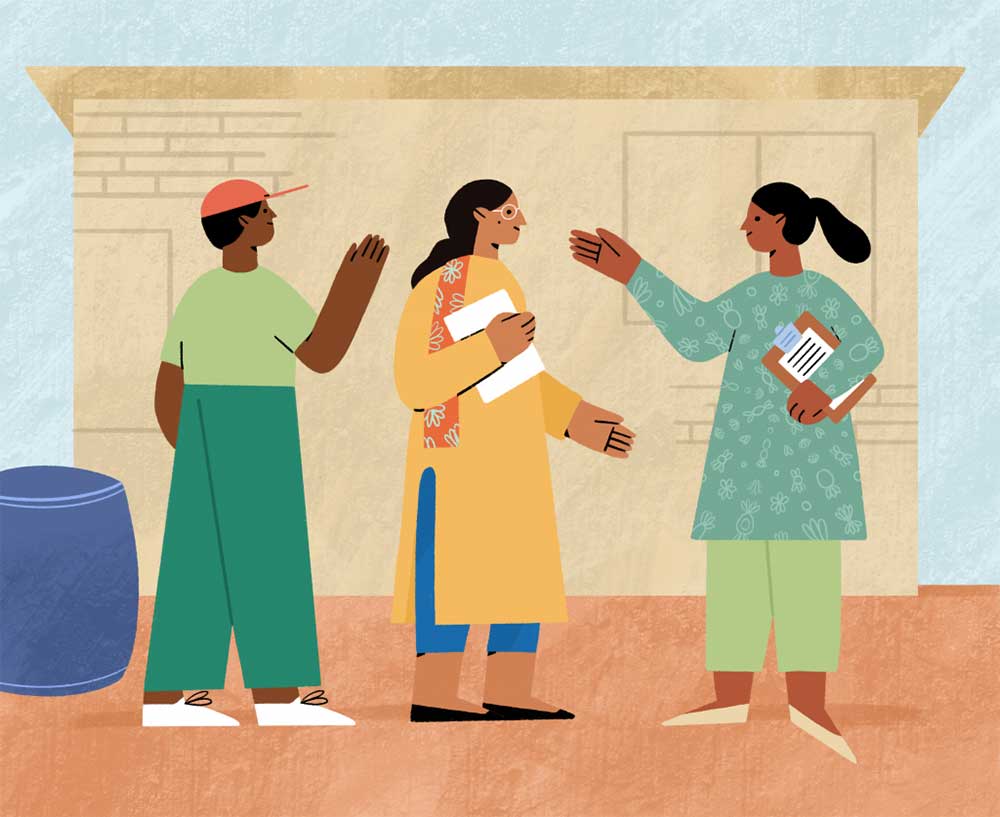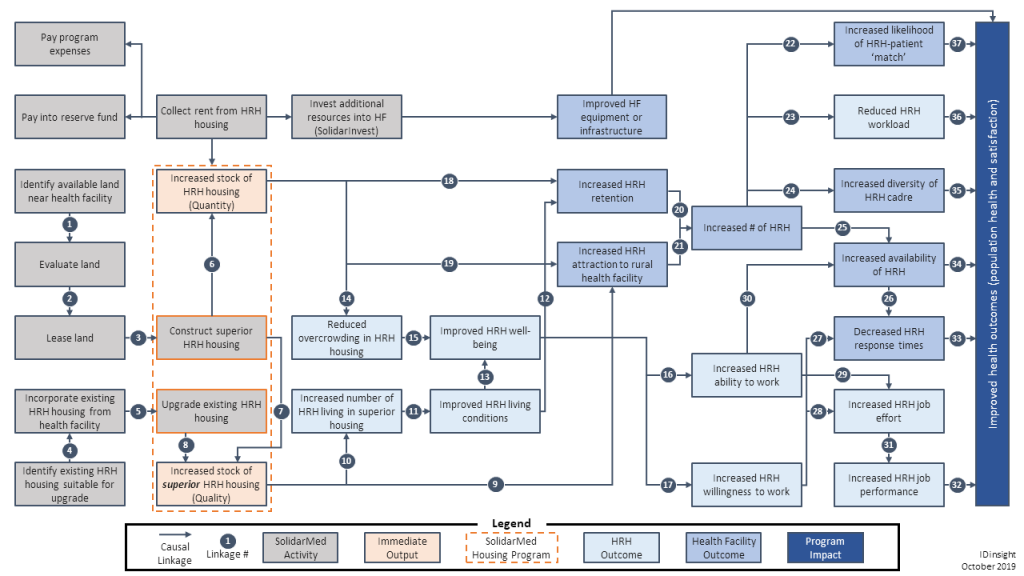Theory of Change case study: SolidarMed
A theory of change for a health worker housing program in rural Zambia helped the nonprofit SolidarMed
(a) clearly articulate its program and its potential for health systems outcomes, and (b) lay a foundation for a monitoring, evaluation, and learning agenda.

Background
Delivery of health services in rural Zambia is critical; over half the Zambian population lives in these areas and they shoulder a heavy burden of disease. However, a shortage of healthcare workers willing to work in rural areas hampers delivery of health services and, ultimately, positive health and health systems outcomes. Rural areas struggle to attract and retain healthcare workers, in part because of inadequate housing options. To address this challenge, SolidarMed runs a program to construct and renovate housing for healthcare workers in rural areas. By improving the quantity and quality of housing for healthcare workers, SolidarMed aims to alleviate staff shortages, with the hypothesis that this will translate into improved health outcomes in rural Zambia.
Question
SolidarMed sought to clarify its pathway to impact – what conditions needed to hold for the housing program to lead to improved health systems outcomes? To answer this question, IDinsight:
1. Produced a theory of change for the housing program
2. Conducted an evidence review to understand whether research supported the pathway to impact laid out in the theory of change
The rest of this case study focusses on the creation, analysis, and implications of the theory of change. For more information on the evidence review, please click here.
Approach
Creating the theory of change
SolidarMedwas already using a log frame, which laid out the outcomes SolidarMed sought to improve, and the activities it was conducting. However, the log frame had not been updated for a while, and needed more details on the assumptions underlying the program’s pathway to impact. For these reasons, we worked with the SolidarMed team to convert the log frame into a detailed theory of change for the housing program, extending it into the realm of health systems outcomes.
Understanding the theory of change
Here is the theory of change diagram we developed, showing the causal logic of the program:

On the far right (in dark blue) are the ultimate long-term objectives: improving population health and satisfaction with the health system. On the left (in light gray) are SolidarMed’s inputs and activities. The theory of change thus flows from inputs on the left to outcomes on the right.
Each box represents a ‘node,’ which includes the primary activities, outputs, and outcomes needed to understand how the program may bring about impact. Nodes are connected by arrows, which represent how one node logically leads to the next. Embedded in those logical connections are “assumptions”– implicit presuppositions that need to be true for the logic to hold (to proceed from one node to the next).
Analyzing the theory of change
To move from one node to the next, the theory of change makes assumptions about how the world works. We created a spreadsheet to track these assumptions, as well as to consider how to prioritize among these assumptions. For each assumption, we assessed a) the likelihood it holds, and b)the disruption to programming if it doesn’t hold. We based our assessments on an evidence review and conversations with program staff. Here are some sample rows from this spreadsheet:
Results
- The theory of change enabled SolidarMed to better articulate its program to get support from funders.
- Analyzing the assumptions in the theory of change suggested to SolidarMed what to prioritize in its learning agenda: we recommended that SolidarMed collect data on assumptions that are less likely to be true, but have a high potential for disruption if they fail to hold. Thus, the theory of change also served as a framework for identifying what a future monitoring, evaluation, and learning (MEL) system for the program should prioritize. Using data from the MEL system, SolidarMed can track how the theory of change is holding and can adapt its program to increase the likelihood of achieving impact.
- The theory of change is a living document that continues to spark internal discussion: revisiting the theory of change a year later, the SolidarMed team identified new aspects of the program that ought to be represented.
Guide
Not sure where to go from here? Use our guide to frame a question and match it to the right method.
Evidence review case study
How a needs assessment enabled a nonprofit in Senegal to validate that they were addressing an important problem
Create your theory of change
Use our drag-and-drop tool to create a theory of change diagram











